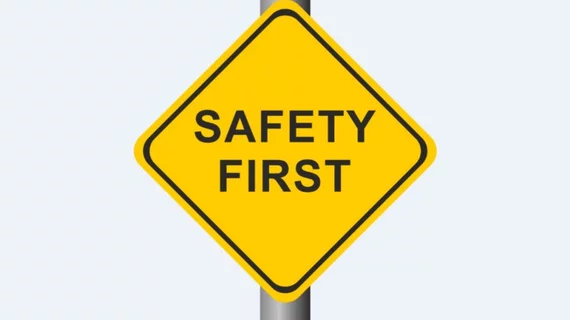'A very, very good thing'—CMS proposes reimbursements for providers' efforts to ensure MRI safety
Imaging providers may soon be reimbursed for the extra work they put into ensuring the safety of patients undergoing MRI exams.
In the 2025 Medicare Physician Fee Schedule, the Centers for Medicare and Medicaid Services (CMS) proposed six new codes related to MRI safety measures. The codes would address a range of steps providers must take to address contraindications, including medical record review, programming MRI conditional devices and more.
This development comes as conversations surrounding MRI safety have been heating up. A slew of MRI accidents—some of them deadly—have prompted many stakeholders to call for more stringent safety standards, which there are very few of currently.
MRI safety expert Tobias Gilk, MRSO, MR architect and founder of Gilk Radiology Consultants, told Health Imaging that these new code proposals could be “a very, very good thing” for the future landscape of MRI safety.
“They’re a recognition that many of the MRI patients of today—with their pacemakers, neurostimulators, continuous glucose monitors, or orthopedic hardware—aren’t the lower-risk and lower-complexity exams that clinical MRI was for the first 25 years of its existence,” Gilk said. “These patients—almost by definition—require more time, effort, and knowledge to review and clear for an MRI exam.”
With the growing complexity of the patient population, the need to address safety concerns has also grown, and it will continue to do so. This will inevitably require more time and consideration from providers and techs, Gilk explained. CMS’ move to recognize the extra work that goes into protecting patients during MRI examinations is an important supplement to the effort to prioritize safety in the suite.
“Before these CPT codes there was no real acknowledgment of the additional burden borne by the providers who accepted these patients,” he said.
The future of MRI safety standards
Efforts to analyze the landscape of MRI safety standards—or lack thereof—are still largely left up to individual organizations. Gilk, who describes himself as an optimist, said that this proposal, if enacted, could help encourage governing bodies to lean into formally defining concrete safety standards in the future.
“This could be an important ’toe hold’ for future efforts at standardization,” Gilk suggested. “If you look at the laws that define CMS regulation of radiology services or accreditation organizations, they require ‘assurance of safety,’ or care environments which are ‘free from hazards.’ I personally don’t think that anyone can look at the last couple decades' trajectory of MRI accidents, or the many, many pictures of stuff smashed against magnets, and make a good-faith argument that our current governance of MRI ‘assures safety’ or creates care environments ‘free from hazards.’”
And while he is optimistic that CMS’ latest move could pave the way for more stringent safety standards, for now the new proposals are just that—proposals—and have not yet been made official.
CMS' proposed MRI safety codes
Here’s a brief overview of what the codes will cover, per CMS:
7XX00: This code relates to assessing implants and foreign bodies, including the identification and verification of implant components. This could also include analyzing the current MR conditional status of individual components and systems of devices. This code covers an initial 15 minutes.
7XX01: This code pertains to everything covered under 7XX00 but covers each additional 30 minutes of work required to do so. It should be listed separately in addition to the code for the primary procedure.
7XX02: This code covers the review of medical records by a physician or other qualified healthcare professional to identify contraindications and potential MRI safety risks. This includes the review of implant MR conditions for indicated MR exam, analysis of risk versus clinical benefit, and determination of MR equipment, accessory equipment, and expertise required to perform examination with written report.
7XX03: This relates to examination customization, planning and performance monitoring by medical physicist or MR safety expert. It also includes a review and analysis by a physician or qualified healthcare professional that tailors MR protocols based on patient restrictions or artifacts associated with MR conditional implants and steps taken to mitigate the risk of nonconditional implants or foreign bodies with written report.
7XX04: This code addresses implant electronics preparation (programming a pacemaker, for example) under supervision of physician or other qualified healthcare professional. It includes MR-specific programming of pulse generator and/or transmitter to verify device integrity, protection of device internal circuitry from MR electromagnetic fields, and protection of patient from risks of unintended stimulation or heating while in the MR room with written report.
7XX05: Covers implant positioning and/or immobilization under supervision of physician or qualified healthcare professional, including application of physical protections to secure implanted medical device from MR-induced vibrational forces, magnetically induced functional changes, and/or prevention of radiofrequency burns from inadvertent tissue contact while in the MR room with written report.

